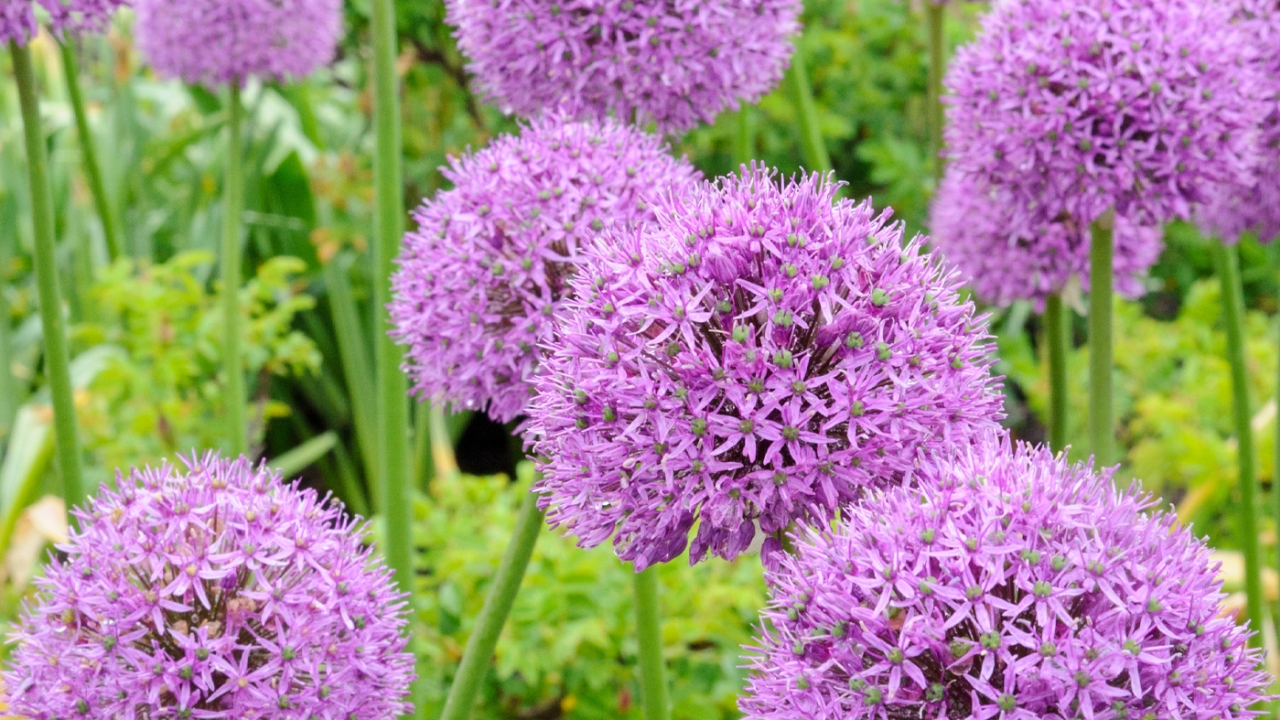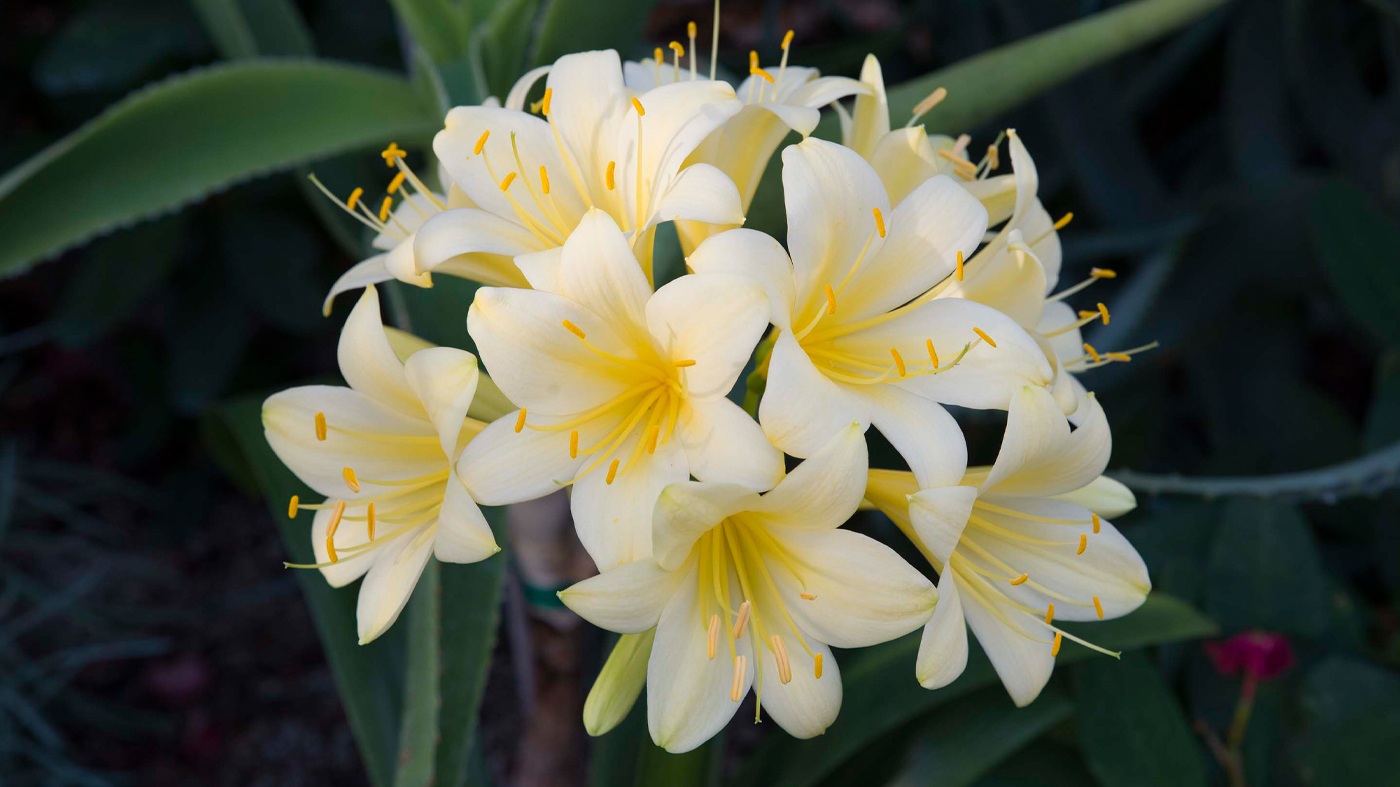

Clivia
Clivia miniata
Flowers are one of the best antidotes to the icy winds of winter, and growing a houseplant that buds and blooms inside while all is dormant outside is particularly satisfying. This winter, as an alternative to the brightly blooming azaleas, chrysanthemums, or traditional holiday plants, consider growing a clivia plant.
Clivia miniata is a wonderful flowering plant. Elegant and imposing, it’s easier to grow than an orchid and more unusual than an amaryllis or a Christmas cactus. When given a month of cool night temperatures in autumn, followed by a six-to-eight-week rest period with very little water, a clivia plant will produce dense clusters of orange, lilylike flowers. Equally important, the straplike, dark evergreen leaves are virtually blemish free, making clivia an attractive foliage plant, even when not in bloom.

Clivia Flowers
Clivia belongs to the lily family (Liliaceae), the same family as amaryllis, and it’s easy to see why. Each colorful clivia flower is similar in shape to, but much smaller than, the larger trumpet-shaped amaryllis flower. Clivia flowers cluster together to form large conspicuous flower heads. There is some variation in height within the species, with certain clivias sending up 20-inch stems with flowers on top and others with flowers close to the center of the plant, nestled within the foliage. In either case, the flowers are sufficiently showy to brighten all winter windows. The primary flower color is orange, but there are also highly prized yellow-flowered cultivars that are rare and quite expensive.
Clivias are large, heavy plants. A mature plant can be 2 to 3 feet tall and almost as wide, with long, arching swordlike leaves. It requires a large, wide-based, clay pot that won't tip over. Like many flowering plants, clivia prefers to be kept rootbound and can remain in the same pot for as long as five years. Since it takes a few years for a clivia plant to bloom, it's best to purchase a mature plant, unless you are very patient.
DIFFICULT TO PROPAGATE
Dr. Jim Ault, director of Ornamental Plant Research at the Chicago Botanic Garden, explains that clivias are slow-growing and difficult to propagate. "If you grow clivias from seed, it takes three to five years for them to bloom for the first time," he says. "The big, marvelous plants you see that fill a whole container take five to 10 years or more to reach that size."
Compounding the difficulty of propagating clivias is the fact that they cannot be tissue-cultured, Dr. Ault says. Tissue culture, a laboratory technique used to propagate plants, allows commercial growers to produce hundreds of plants from a single bud or even cell, knowing that each new plant will be an exact duplicate of the parent. This is especially important in the development of plant cultivars that are typically selected for specific ornamental characteristics. Unfortunately, clivias, like other plants resistant to tissue culture, can be propagated only from seeds or division.
IN THE WILD
According to Dr. Ault, clivias are native to the subtropical forests of eastern South Africa where he has seen them growing wild. "You'll find them growing in very organic material, in deep to partial shade, sometimes on top of rotting logs," he said. He has also seen a rare, yellow-flowered clivia growing wild in South Africa.
There also exists in cultivation an extremely rare clivia with a variegated leaf. "I have seen it once," said Dr. Ault. The plant belonged to a colleague and "it was very bashful about making offsets, very slow in making new plants." His colleague had owned it for many years and was still unable to propagate it.
CLIVIA CARE IN SPRING AND SUMMER
Given the regal quality of the plant, a clivia is surprisingly easy to grow. It is well suited to a bright north window, or an east or west window shaded from the sun. It does not need high humidity and should not be misted. During the spring and summer growing seasons, a clivia needs regular watering but should be allowed to become dry to the touch between waterings. An automatic weekly watering will often be too much and can cause rot. Fertilize once a month with a half-strength dilute solution of 20-20-20 fertilizer. While rarely in need of repotting, plants can be divided and repotted almost any time of the year. Simply cut or pull the large fans of leaves apart, ensuring each division has a plentiful supply of the large fleshy roots, and pot up in a well-drained organic soil mix.
CLIVIA CARE IN FALL AND WINTER
In the fall, the clivia’s schedule is similar to that of a Christmas cactus. Stop fertilizing; water only when the foliage begins to wilt; and place the plant in a porch or other cool room where night temperatures drop below 50 degrees. This six- to eight-week rest period is essential for flower bud formation. A shorter cool period could result in delayed flowering. Once inside, water very sparingly until flower buds appear nestled between the leaves. This might take two months but will reward you with a spectacular bloom just as winter enters its bleakest stage. When flowers fade, remove the stalk at its base to prevent seed set. In spring, resume normal watering and feeding
AT THE GARDEN
If you visit the Greenhouses at the Chicago Botanic Garden in late winter, you can see both the yellow and orange clivias. But you don't need a greenhouse to grow them — they’re unusual and satisfying houseplants for almost any home.

